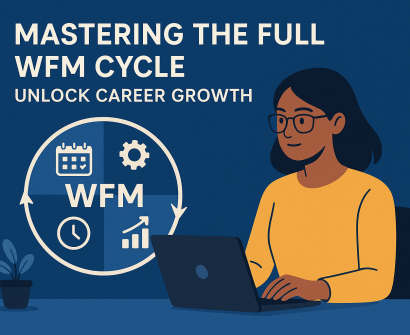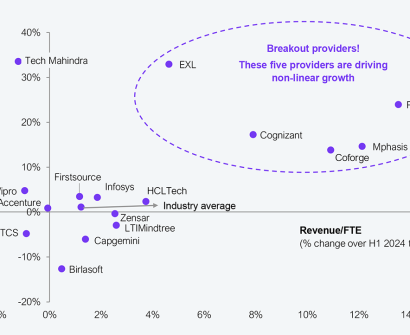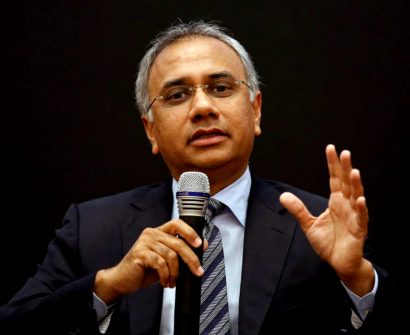Currently Empty: $0

For decades, we’ve often thought of leadership profiles in unique buckets—two popular varieties were the “visionaries”, who embrace strategy and think about amazing things to do, and the “operators”, who get stuff done. We intuitively knew that there must be leaders that span these areas, but in fact, few do. According to a global survey of 700 executives across a variety of industries conducted by Strategy&, the strategy consulting division of PwC, only 8% of company leaders were said to excel at both strategy and execution.
You may think that success can be achieved by excelling at either strategy or execution individually—that great visionaries can change how we see the world, or that amazing operators can wind up outperforming competitors. But our experience and research suggests that the days of keeping strategy and execution as separate topics are ending: We need leaders that can create big promises to customers, and help their organizations deliver on those promises.
Take Starbucks: CEO Howard Schultz created a very ambitious aspiration for the company, far more than just being a seller of coffee. He wanted Starbucks to be a “third place” for conviviality beyond home and the workplace. Visit a Starbucks anywhere in the world, and you will find the same consistently comfortable and welcoming ambiance. But he didn’t get there simply by telling his staff to “be warm and friendly”.
Starbucks has been able to deliver on its promise because that promise is tightly linked to the company’s distinctive capabilities. The feel of Starbucks stores isn’t created merely by the layout and the décor—it exists because the people behind the counter understand how their work fits into a common purpose, and recognize how to accomplish great things together without needing to follow a script.
Over many years, Starbucks has built a capability to foster a relationship-driven, “employees-first” approach. It was Schultz who famously said “You can walk into [any type of retail store] and you can feel whether the proprietor or the merchant or the person behind the counter has a good feeling about his product. If you walk into a department store today, you are probably talking to a guy who is untrained; he was selling vacuum cleaners yesterday, and now he is in the apparel section. It just does not work.”
Schultz made sure that Starbucks would be different: Workers are called “partners” rather than employees, and even part-time staff (in the U.S.) receive stock options and health insurance. At the height of the global financial crisis, when other companies were cutting HR costs wherever they could, Starbucks invested in staff training, including coffee tastings and courses that ultimately qualified employees for credit at higher education institutions. Beyond employees, much of what you will see and experience at Starbucks has been well thought out to accomplish the company’s mission, from the music played to the furniture selected. Even the bathrooms are strategic at Starbucks, because they play a part in allowing customers to spend time in the “third place.”
Leaders like Howard Schultz don’t just have both the visionary and operator skills—they deeply value the connection between the two skill sets. In fact, they see them as inextricably linked, since a bold vision needs to include both a very ambitious destination and a well-conceived path for execution that will get you there. This is ever more important today, where differentiating your company is so difficult. Differentiation increasingly requires more innovative thinking, and the use of very specific areas of expertise (like Apple’s winning design, a capability that wouldn’t have been prioritized in most technology companies before Jobs).
Leaders who master both strategy and execution start by building a bold but executable strategy. Next, they ensure that the company is investing behind the change. And last, they make sure the entire organization is motivated to go the journey.
Developing a bold but executable strategy starts with making sure leaders have addressed the questions of “What are we great at?” and “What are we able to achieve?” rather than coming up with lofty plans and asking functional and business-unit teams to do their best to execute. Indeed, they spell out the few differentiating capabilities that the company must excel at to realize the strategy.
Ensuring that the company is investing behind the change means that leaders recognize that the budget process is one of the most important tools in closing the strategy-to-execution gap. Cost isn’t an exogenous variable to be managed—it is the investment in doing the most important things well. But rarely are budgets linked closely to the strategy. If your company is merely incrementalizing the budget up or down by a few percentage points, ask yourself whether the investments are really reflective of the most important tasks.
Motivating individuals is a hugely underleveraged tool to close the gap between strategy and execution. Great leaders know that success stems from specific skills that come together in unique ways to do the challenging tasks in executing the strategy. But today most employees don’t even understand how they are connected to the strategy. In a recent (not-yet-published) survey of 540 executives, managers, and non-managers by Strategy&, only 28% of employees said that they feel fully connected to the purpose and identity of their organization. Articulating the strategy in human terms—what capabilities the company will need to build, and what skills are required to do so—not only helps the company focus on how to develop the right talent, but it allows individuals to understand how their role fits into the overall strategy and allows them to see their work in a much more fundamentally connected way.
How are you doing in combining strategy and execution? Below are some questions for you to think through that cover all three stages of the strategy-to-execution continuum. Getting these three areas right allows leaders to make a big step forward toward closing the gap between strategy and execution:
- Build the strategy.
- Are you very clear about how you add value to customers in a way that others don’t, and about the specific capabilities that enable you to excel at that value proposition?
- As strategies are being developed, are you using the classic approach of “build the strategy, then think about execution,” or are you asking yourself the question, “Do you have the capabilities needed—or can you build the capabilities needed—to execute the strategy?”
- As you’re dealing with disruption, are you shaping the world around you with your given strengths, or are you waiting for change to happen, and therefore playing by someone else’s rules?
- Translate the strategy into the everyday.
- Are you diligently following through on what you have decided? You need to be very clear about what the strategy is and what it takes to succeed—and to communicate it so that everyone in the organization understands what they should be doing.
- Are there visible programs (for example specific new technologies, new processes, or training programs) to build the key capabilities your organization needs to win with its strategy?
- Are you building specific connections between strategy and the budgeting process so you’re reallocating funds to where they matter most? And do you have mechanisms in place that translate the strategy into personal goals and rewards for managers and employees?
- Execute the strategy.
- Are you motivating employees every single day to understand how what they’re doing connects to the important strategic levers that you have focused on?
- Are you enabling employees to work together across organizational silos to tackle the cross-functional challenges that allow the company to win?
- Are you keeping track not just of your performance, but of how you’re building and scaling up those few key capabilities that enable you to create value for customers in ways that others cannot?
- Is your management team engaged in how you are executing the strategy—not just by measuring results, but by constantly challenging the organization and supporting it in improving its key capabilities? Are you setting your team’s sights high enough for what they need to accomplish, and by when?
We believe there’s a tremendous upside for companies that can succeed at strategy through execution. The leaders who are able to be both visionaries and operators, and switch between these two mindsets, are the ones who can turn their organizations into super-competitors.
Source: GWFM Research & Study








